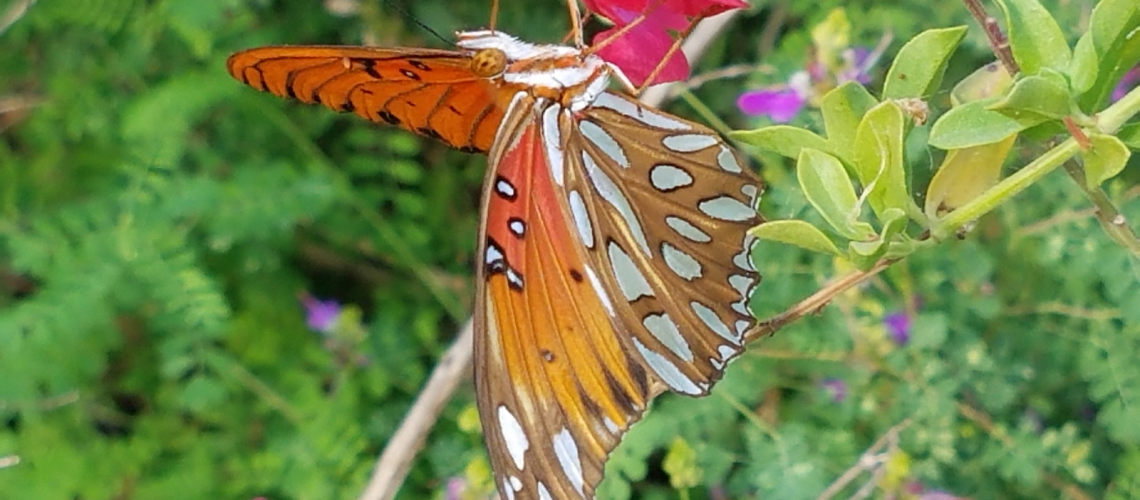10 Common Butterflies in North Texas Gardens and the Plants that Attract Them
Have you ever seen a beautiful butterfly, but you don’t know what kind it is? Ever wonder how to get butterflies to come to your yard? Check out 10 common butterflies we see here in North Texas, along with each butterfly and caterpillar’s favorite plants.
Two different groups of plants are listed for each butterfly type: nectar plants and host plants. Nectar plants are used by adult butterflies for food. Although different butterflies will prefer certain nectar plants, the plants listed here are just a few of many a butterfly may get nectar from. Host plant’s leaves are used by caterpillars as food and to sometimes make their cocoon on. Some caterpillars can use several different types of plants as hosts, but some are specific to just one type of plant.
It is best to plant both nectar and host plants to attract adult butterflies to eat and lay their eggs. It is also fascinating to watch caterpillars grow, make a cocoon, then turn into an adult butterfly. It is important to remember that if you do plant host plants, their leaves are going to get eaten! This is normal and generally will not kill the plant. Make sure to plant groups of plants rather than individuals for both nectar and host plants, as this is more efficient for the butterfly and thus more likely to attract them.
Eastern Tiger Swallowtail
Papilio glaucus
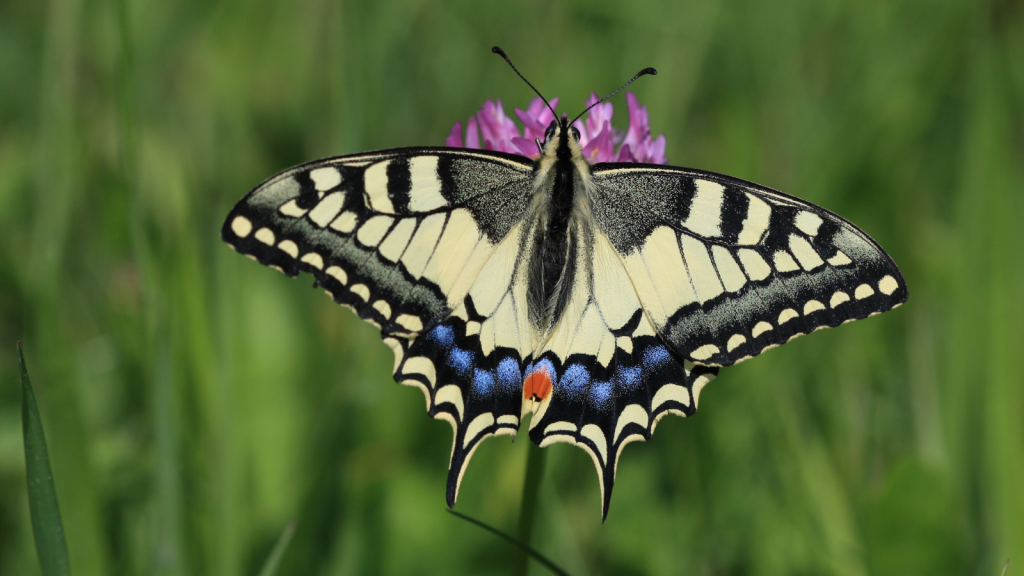
This butterfly is yellow with black stripes most of the time, but females can also be black. These are pretty large butterflies and hard to miss if they are in your garden. You can tell it is a swallowtail butterfly by the little tail extension off the back of each wing.
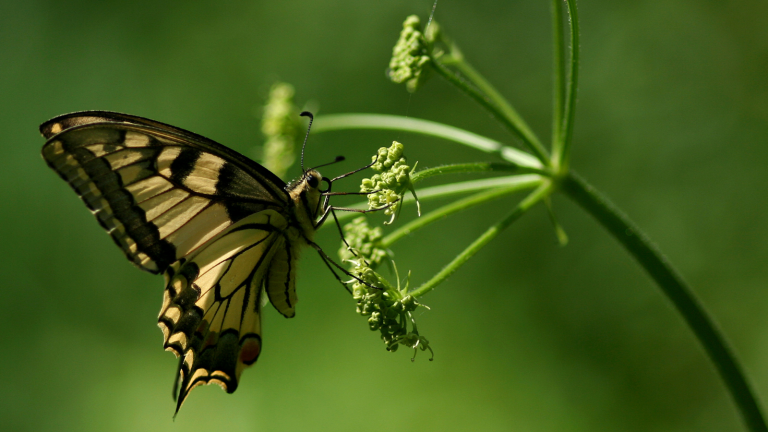
Adult Tiger Swallowtails like nectar from some of the same trees that the caterpillars like to host on, like Wild Cherry (Prunus). They also like Lilac (Syringa vulgaris), Milkweeds (Asclepias, seen below) and Joe-Pye Weed (Eupatorium).
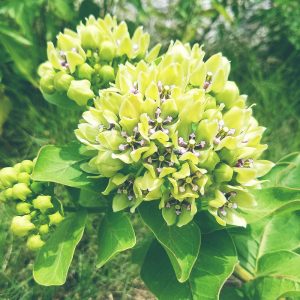
Tiger Swallowtail caterpillars like the leaves of certain trees as hosts like Wild Cherry (Prunus), Sweetbay (Magnolia), Basswood (Tilia), Tulip Tree (Liriodendron), Birch (Betula), Ash (Fraxinus), Cottonwood (Populus), Mountain Ash (Sorbus), and Willow (Salix).
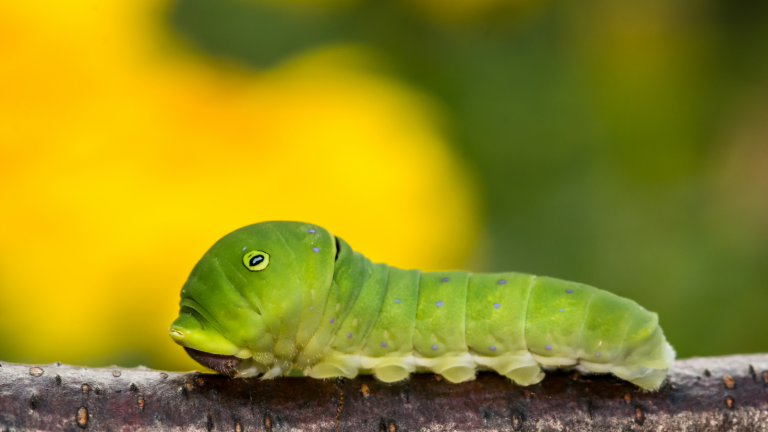
Pipevine Swallowtail
Battus philenor
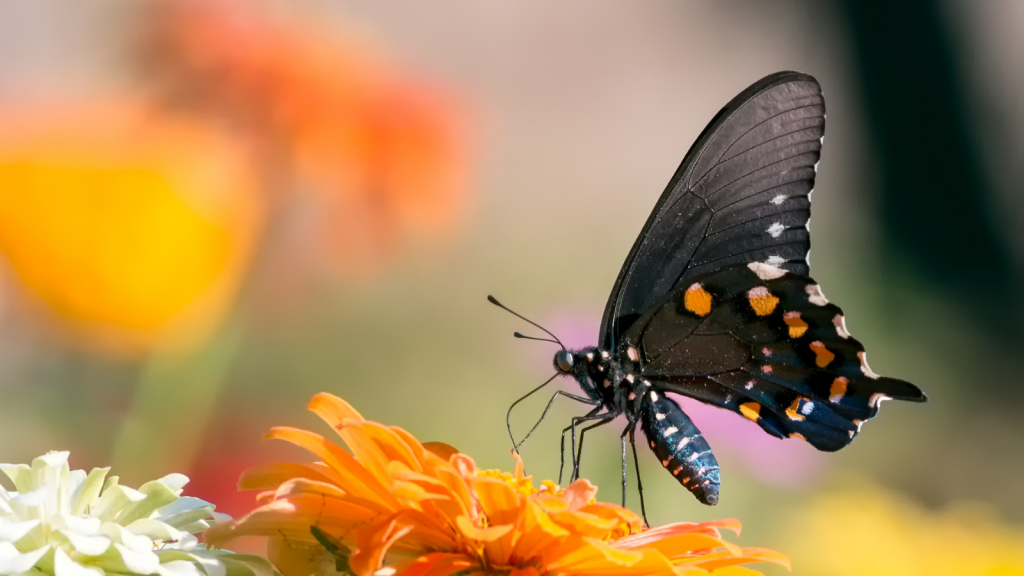
Pipevine Swallowtails are named that because their host plant is the Pipevine (Aristolochia). They are large butterflies and also hard to miss, like the Tiger Swallowtail. When caterpillars are young, they sometimes feed in groups.
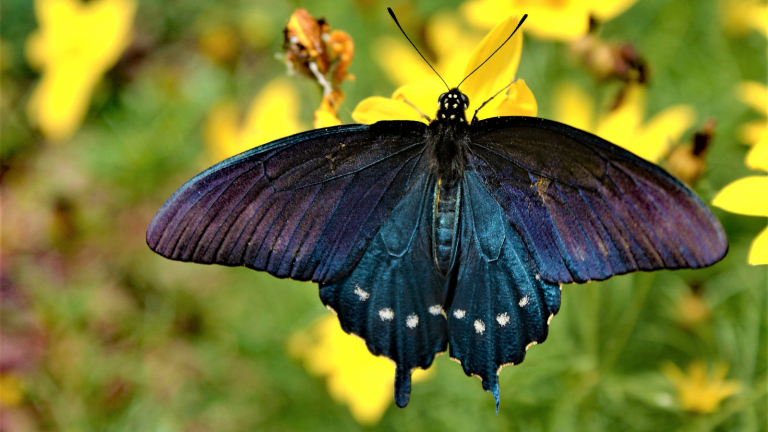
Pipevine butterflies like the nectar of Thistles (Cirsium, seen below), Bergamot, Lilac (Syringa vulgaris), Lantana (Lantana), Verbenas, and Lupines.
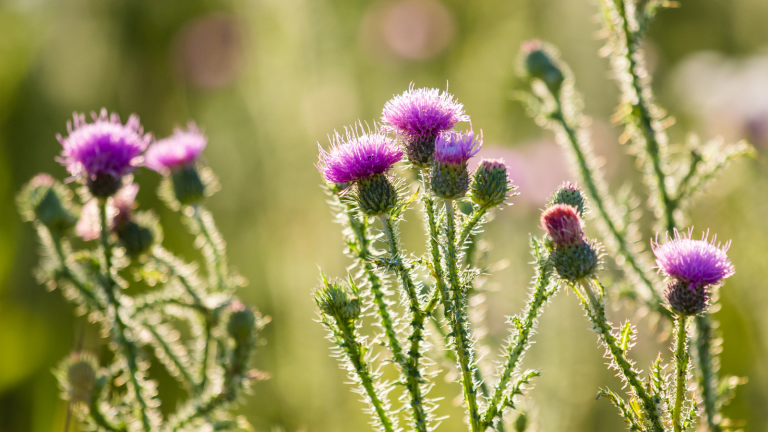
As mentioned above, Pipevine caterpillars use Pipevine (Aristolochia) as their host plant.
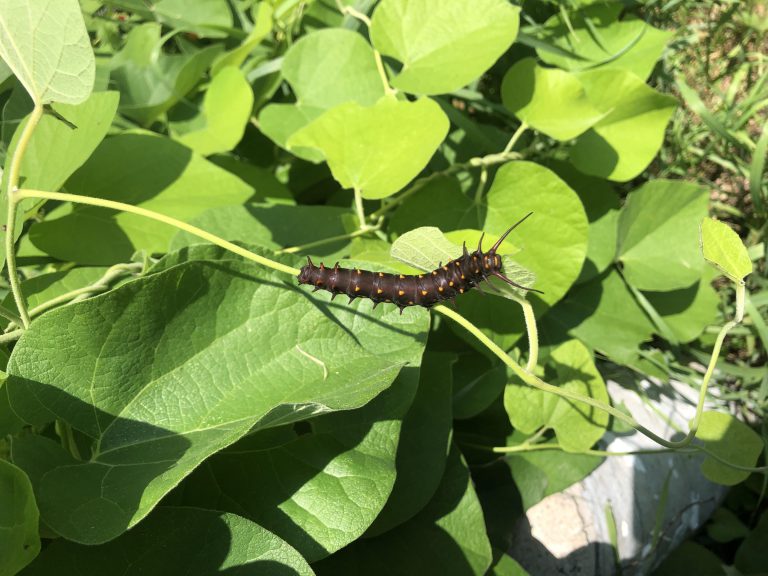
Gulf Fritillary
Agraulis vanillae
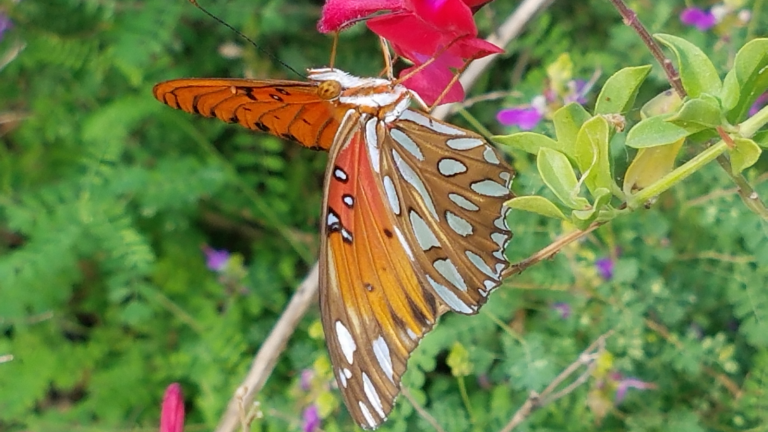
Gulf Fritillary butterflies are very common and in North Texas nearly year-round. Photos do not do this butterfly justice. The large spots always come out looking white in photos, but they are actually shiny and silver, like foil.
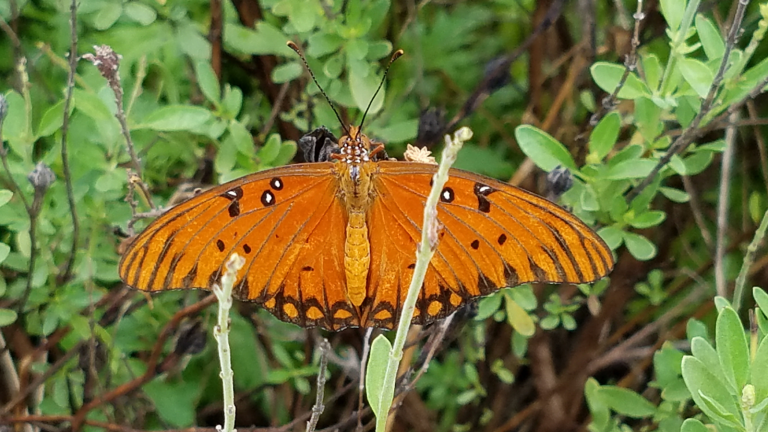
Adults love a wide variety of flowers for nectar, including Composites (Asteraceae, like Sunflowers), Lantana (Lantana, seen below), and Salvia (Salvia).
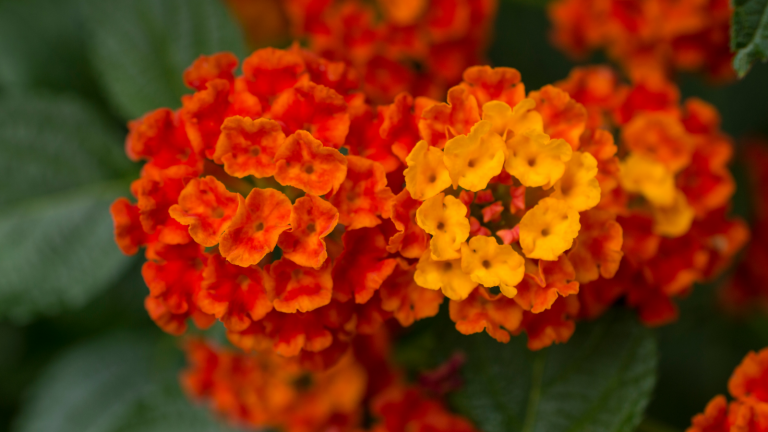
Caterpillars are more narrow in their tastes and prefer Passionflower Vines (Passiflora incarnata and Passiflora foetida).
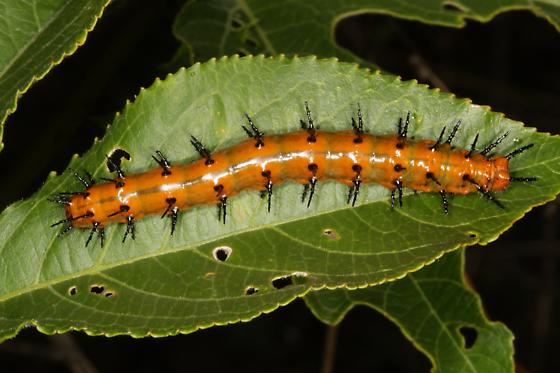
Monarch
Danaus plexippus
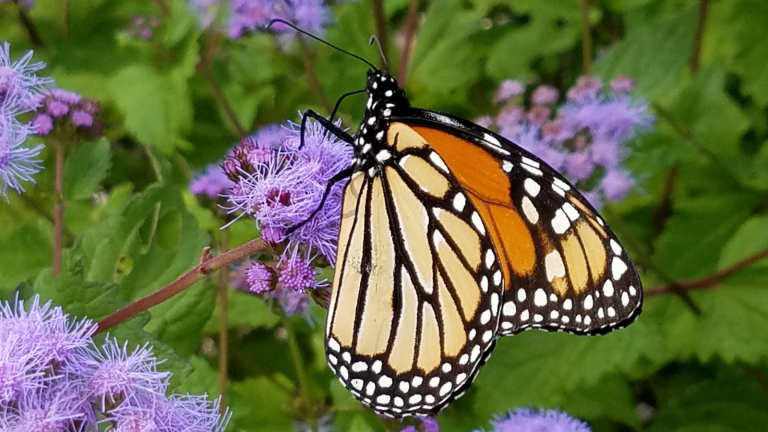
The Monarch butterfly is one that we all know and love. But be careful! Take a close look at all the Monarch mimic butterflies below to make sure what you are seeing is actually a Monarch!
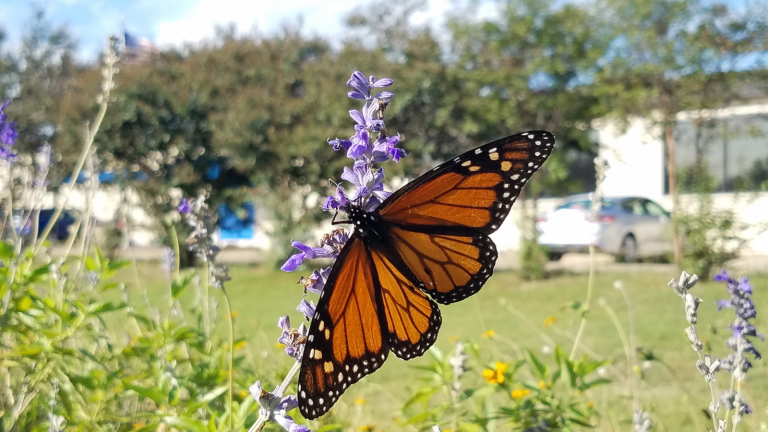
Adult Monarchs love a variety of nectar plants like Lantana (Lantana), Salvia (Salvia), Milkweed (Asclepias), Mistflower (Conoclinium, seen below), Goldenrod (Solidago), Ironweed (Vernonia), and Gayfeather (Liatris).
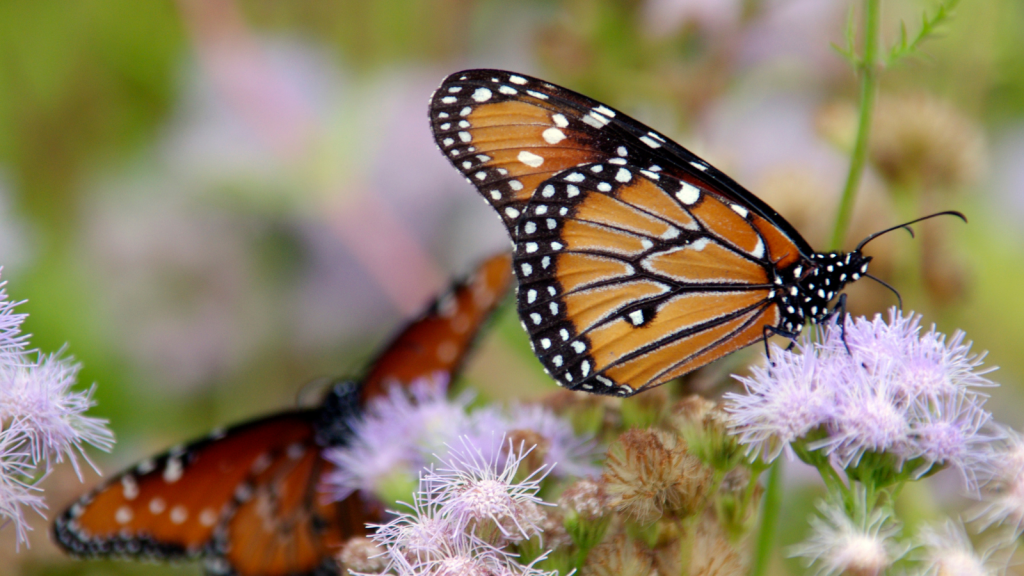
The caterpillars host on all different species of Milkweeds (Asclepias).
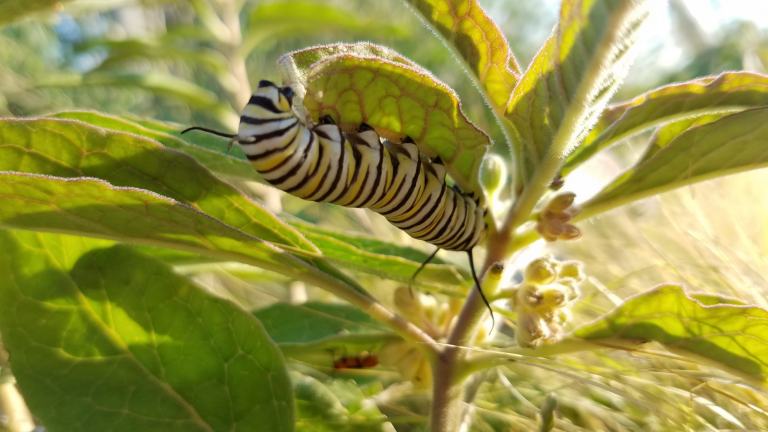
Queen
Danaus gilippus
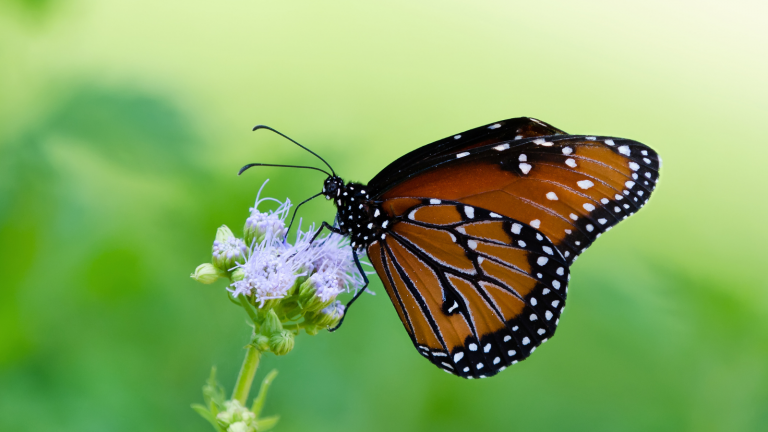
Queens are a common butterfly here in North Texas and are sometimes confused with Monarchs. Besides their different backsides, the top wings being spotted rather than striped give it away.
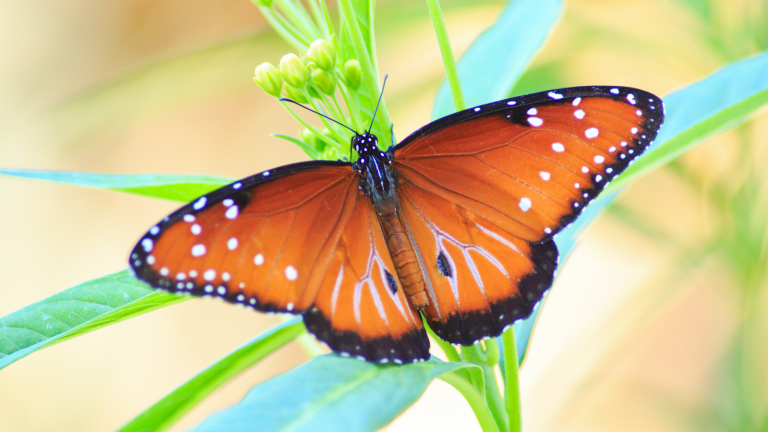
Queens adults like many of the same plants as Monarchs for nectar. The below photo shows a Monarch (left) and a Queen (right), both on Mistflower.
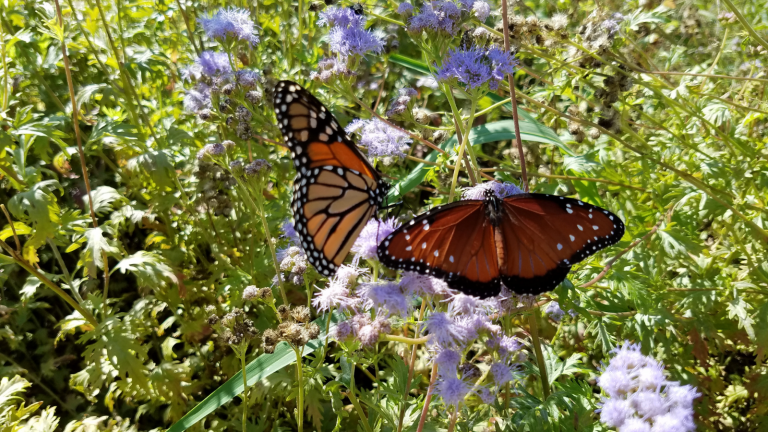
The caterpillars also host on Milkweeds (Asclepias), just like Monarchs. The caterpillars can be distinguished by the extra body extensions.
Viceroy
Limenitis archippus
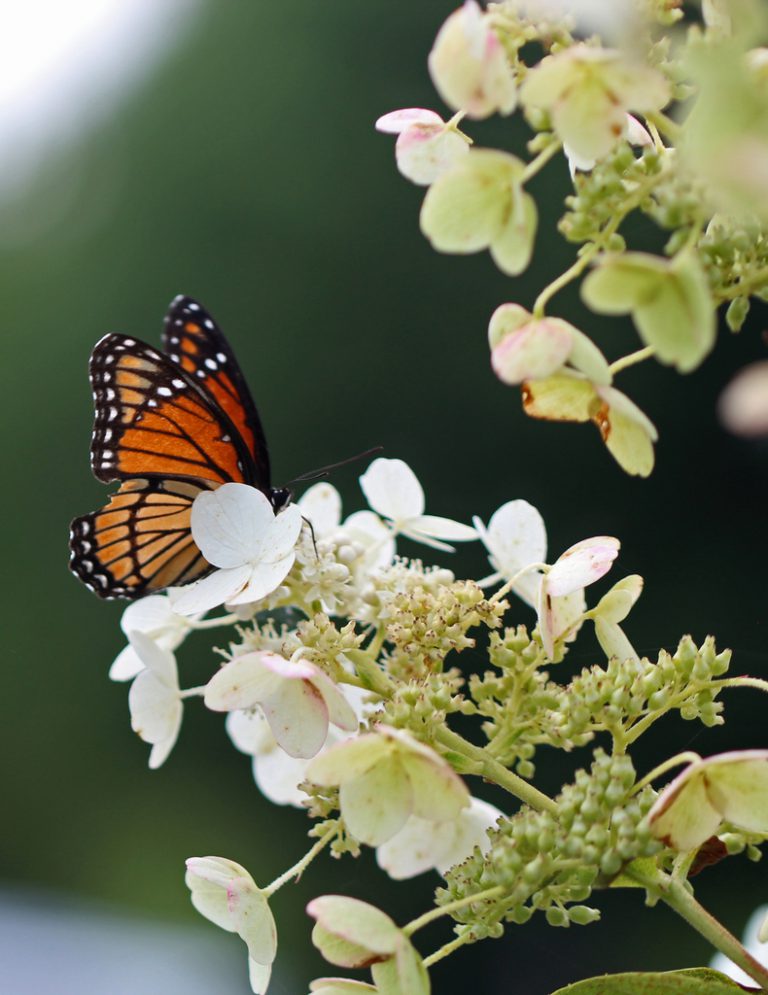
Viceroys are another Monarch mimic and this one does a pretty good job. The main difference to look for is the extra black line going through the wing cells on the bottom wing. These butterflies will eat fungi and dung in the early season when there are not enough flowers.
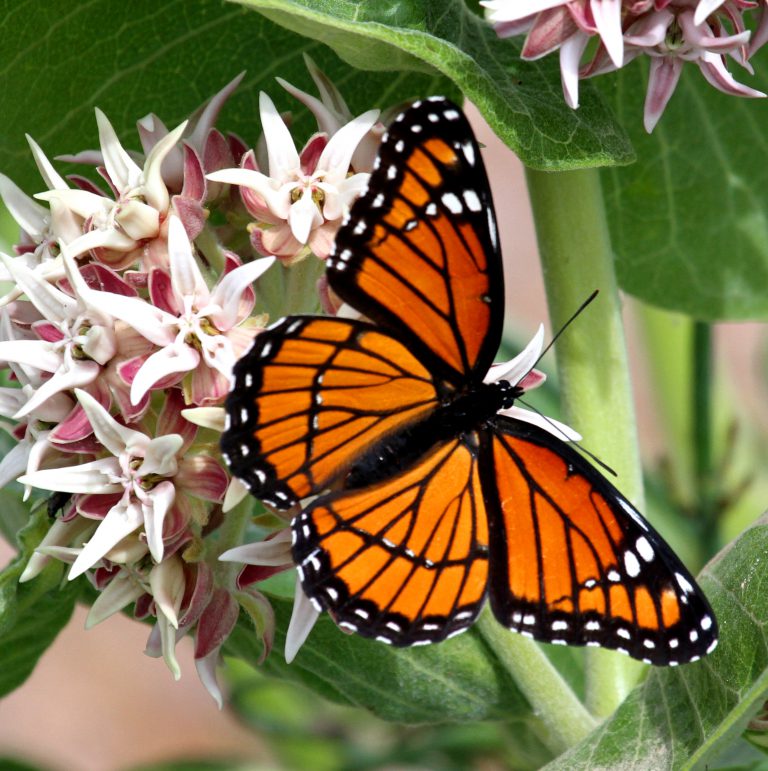
Viceroy adults enjoy many of the same nectar flowers as Monarchs, like Asters, Mistflower (Conoclinium), Goldenrod (Solidago), Ironweed (Vernonia, seen below), and Joe-Pye Weed (Eupatorium).
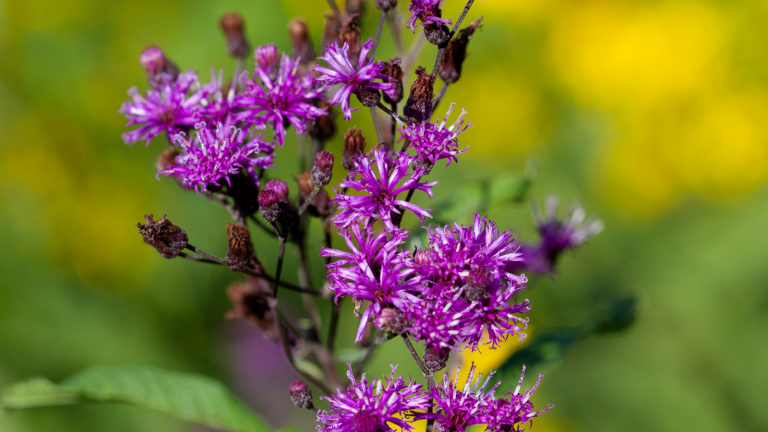
Viceroy caterpillars look nothing like Monarch caterpillars, and instead mimic bird poo for protection from predation. They host on trees in the willow family (Salicaceae) including Willows (Salix), and Poplars and Cottonwoods (Populus).
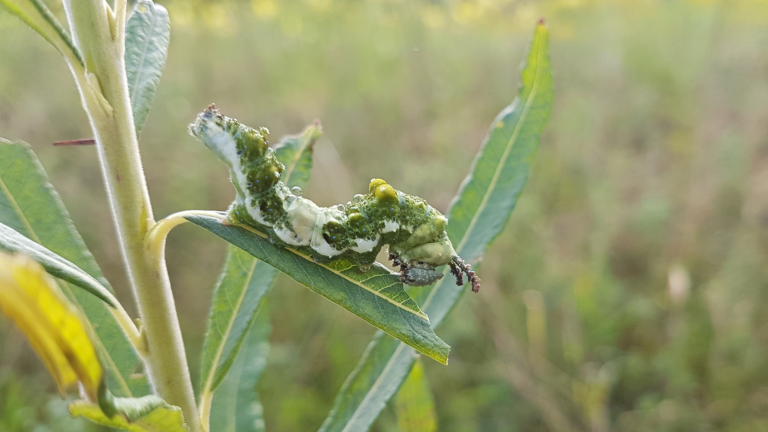
Painted Lady
Vanessa cardui
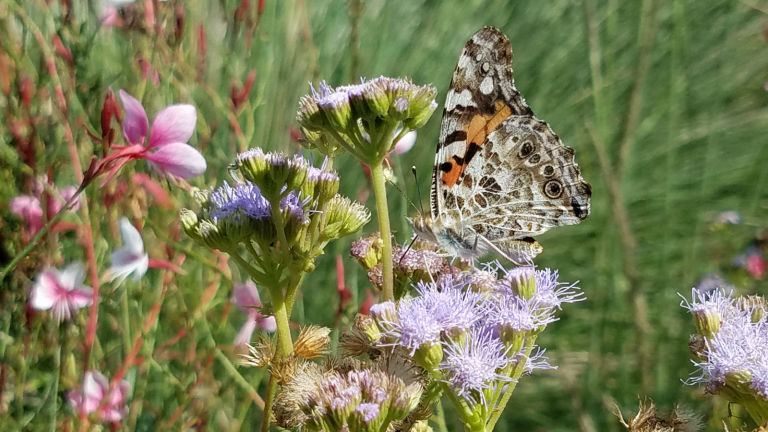
Painted Lady butterflies are pretty common in North Texas but take a close look because there are several other “painted” butterflies as well that look similar. These butterflies are out almost year-round and love a variety of plants that thrive in North Texas gardens.
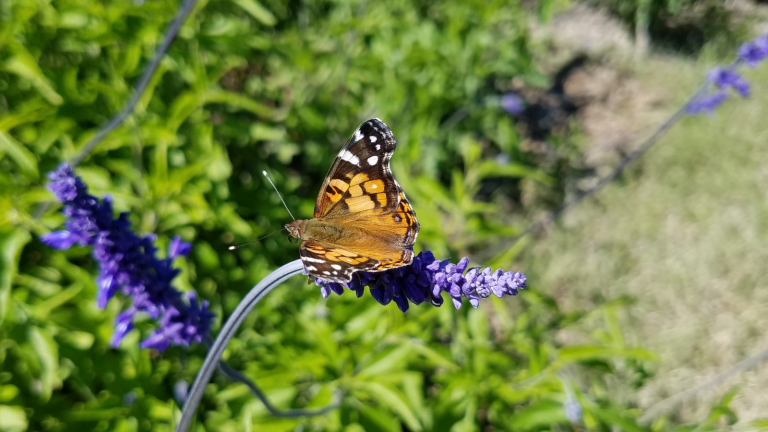
Painted Ladies love a variety of plants for nectar but prefer composites that are tall (think 3-6 feet tall), such as Mistflower (Conoclinium), Goldenrod (Solidago), Ironweed (Vernonia), Gayfeather (Liatris), and Joe-Pye Weed (Eupatorium). Some other plants they like to get nectar from that are not composites include Buttonbush (Cephalanthus occidentalis, seen below) and Milkweeds (Asclepias).
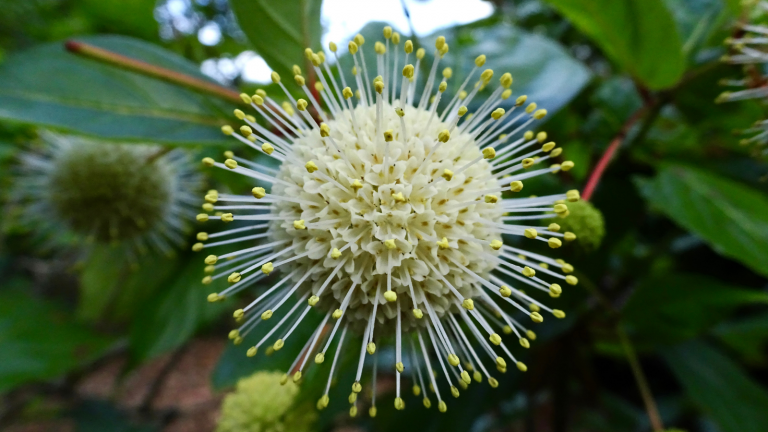
Painted Lady caterpillars are not picky eaters. More than 100 different host plants have been identified, but the most common are plants like mallows (Malvaceae), Thistles, certain legumes, and Hollyhock (Iliamna).
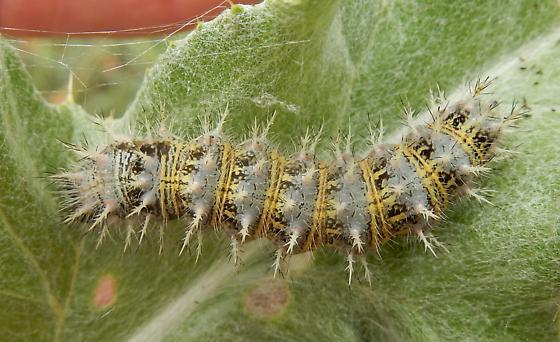
Common Buckeye
Junonia coenia
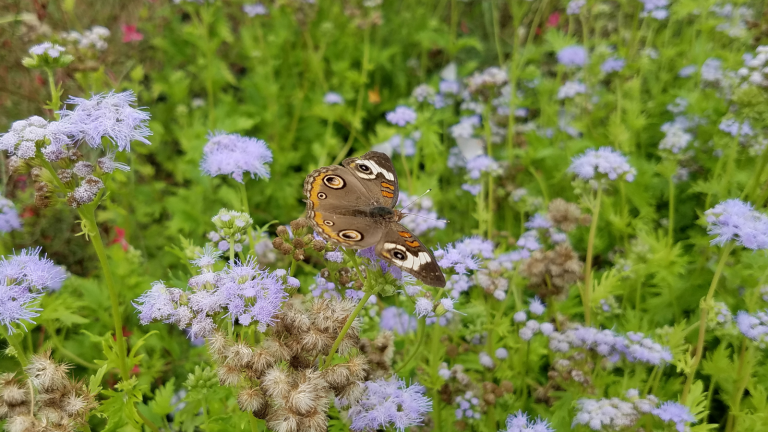
Common Buckeye butterflies like to live with lower vegetation and a bit of bare ground. These are also common butterflies in North Texas gardens and can be seen for a good portion of the year.
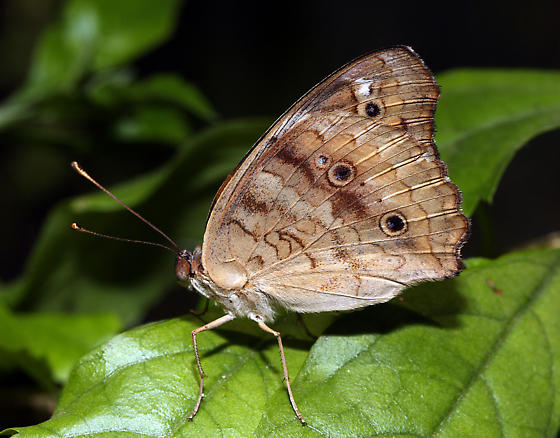
Buckeyes like composite form plants (Asteraceae), just like many of the other butterflies listed here, although they prefer shorter plants like Aster (Symphyotrichum, seen below), Gumweed (Grindelia), and Tickseed (Coreopsis).
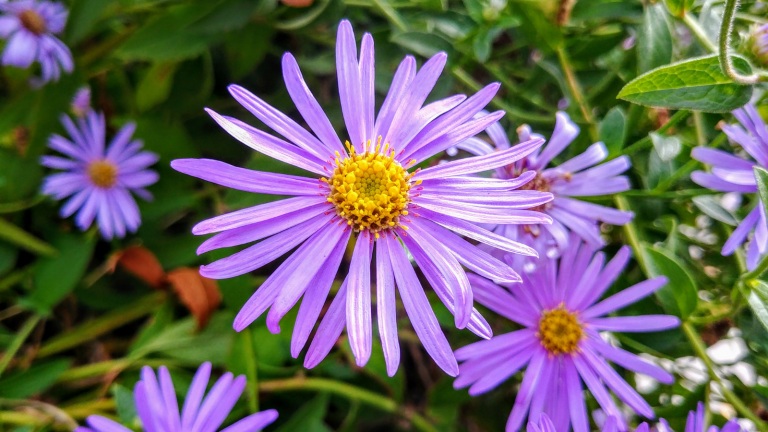
Buckeye caterpillars like Snapdragon (Sairocarpus), Flax (Linaria), Plantain (Plantago), and Acanthus as host plants. Caterpillars are small and have black spikes but can have a variety of others colors on them, like orange, red, blue, and even just solid black.
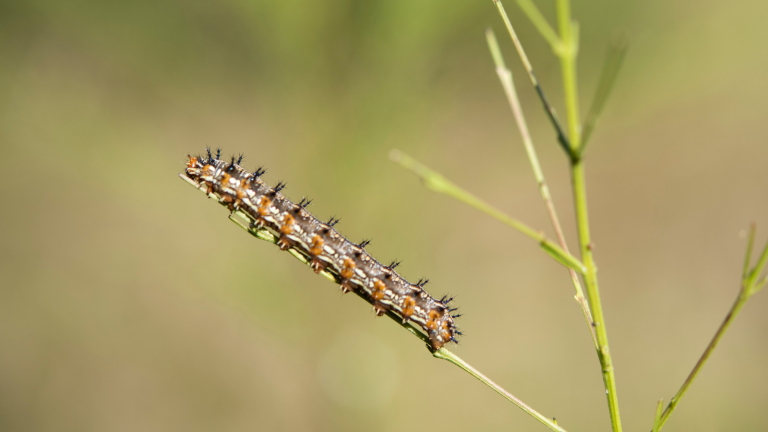
Red Admiral
Vanessa atalanta
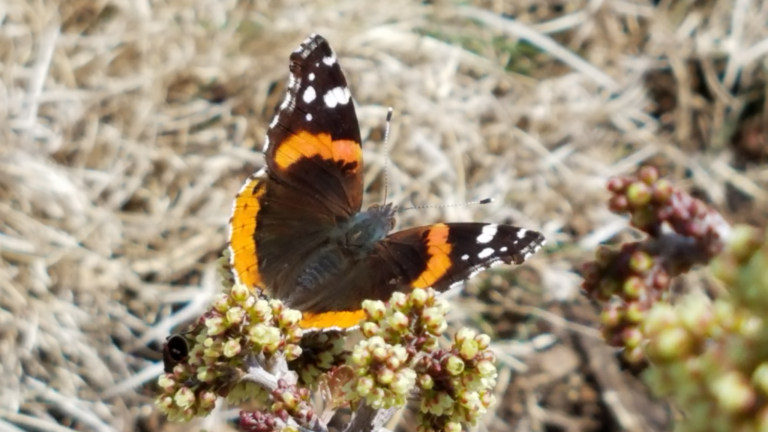
Red Admirals are medium sized butterflies that are pretty common but aren’t that showy so they may not be seen as often as others. Compared to other butterflies, Red Admirals can have erratic flight patterns, which is another way they can be identified.
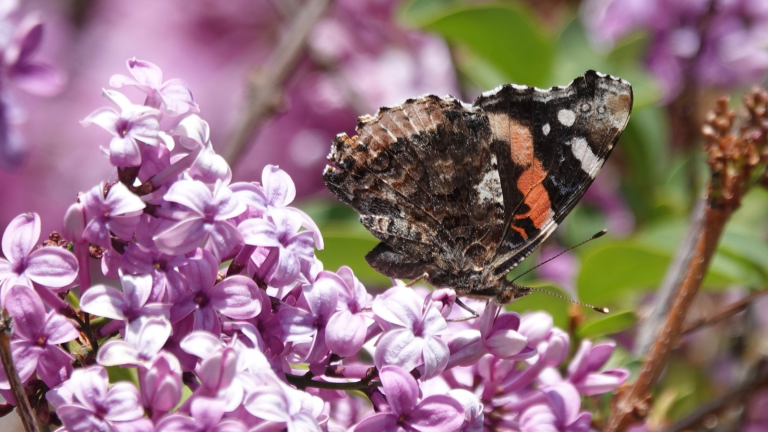
Red Admiral adults do not prefer nectar from flowers as their primary food. Many butterflies do not get nectar from flowers and instead live off rotting fruit, tree sap, and the droppings of other animals, like the Red Admiral. Adding rotting fruit to your garden can go a long way to attract another group of butterflies.
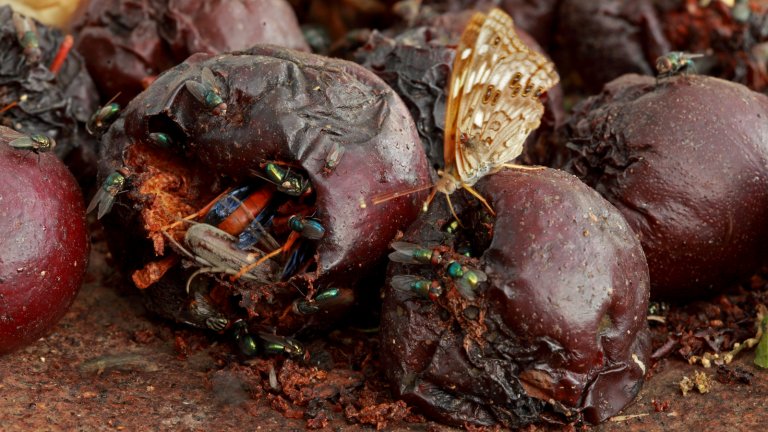
Caterpillars of Red Admirals host on plants in the Nettle family (Urticaceae). They reside in curled up leaves and will make a silk to tie leaves together to make a nest.
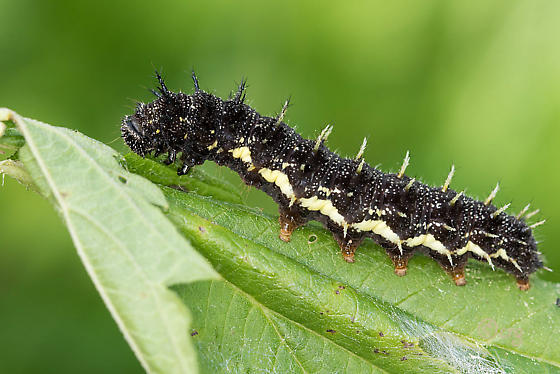
Southern Dog Face
Zerene cesonia
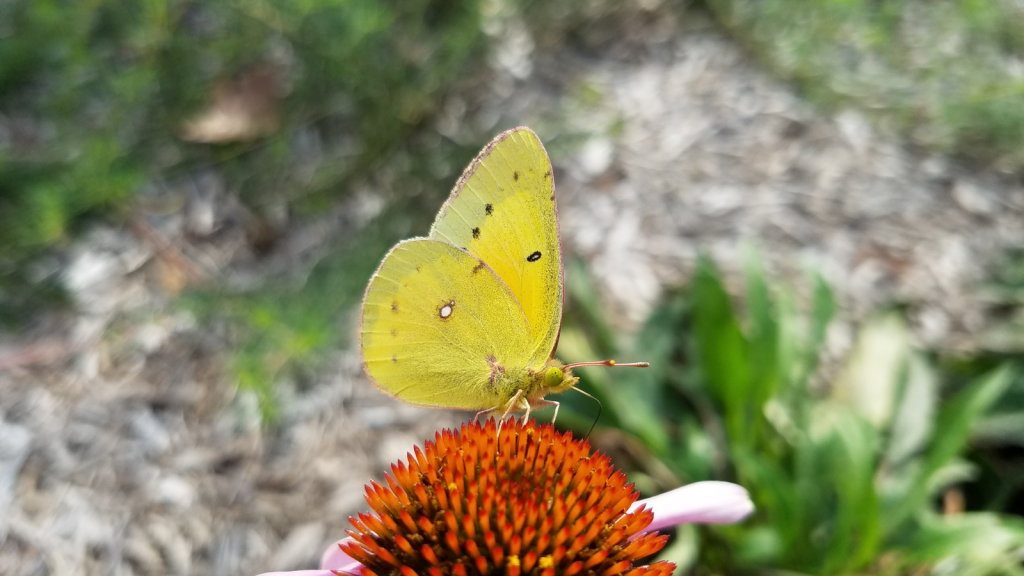
Dog Face butterflies are called that because the pattern on the back of their wings look like dog faces. These are medium sized butterflies but are easy to spot because they are bright yellow.
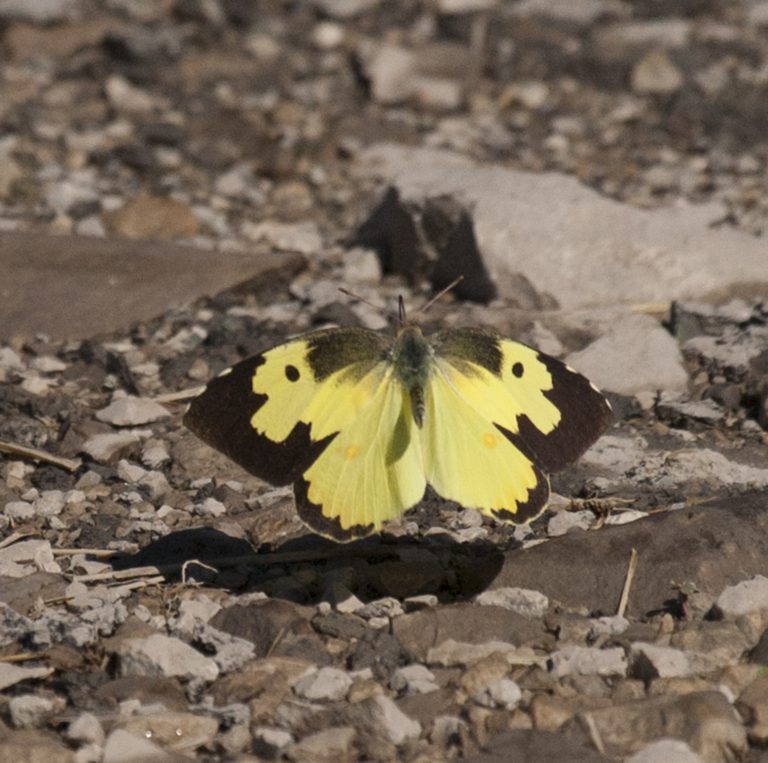
Southern Dog Face adults love nectar from many of different plants including Coreopsis, Medicago, Houstonia (seen below), and Verbena species.
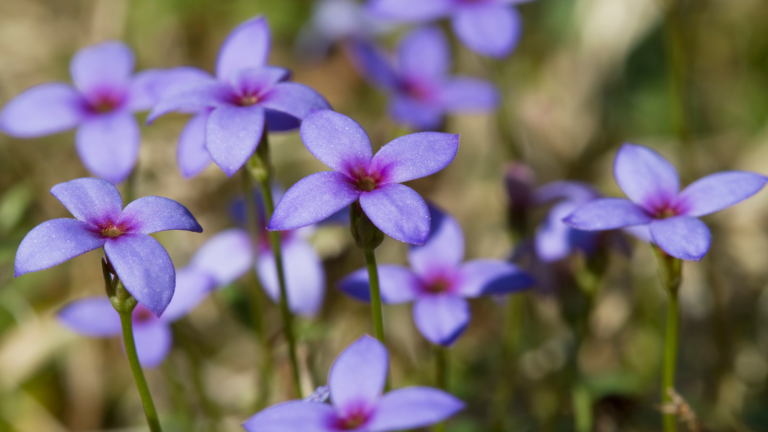
Dog Face caterpillars host on plants from the pea family (Fabaceae) that have small leaves. The main ones from North Texas are plants like prairie clover (Dalea), alfalfa (Medicago), and other clovers.
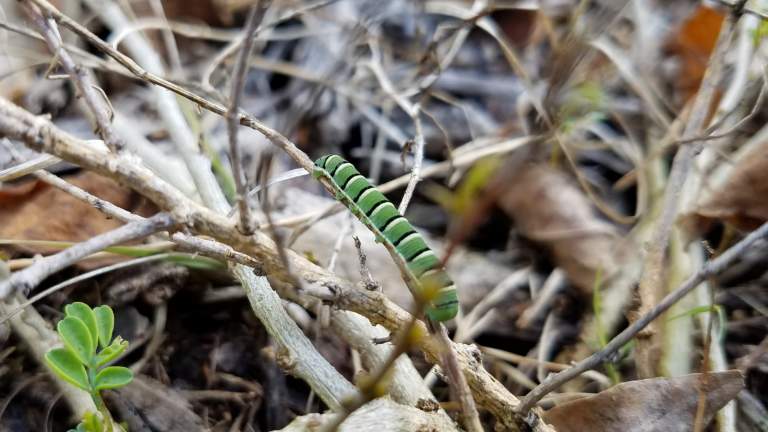
These are just a few of the hundreds of types of butterflies you can attract to your North Texas yard. You can find more information about North Texas butterflies, moths, and the plants they like at:
Heather Bass is a Water Conservation Coordinator at Tarrant Regional Water District who focuses on outdoor water conservation and sustainable landscaping through ecologically sound principles. You can reach Heather at heather.bass@trwd.com or 817-720-4432.

